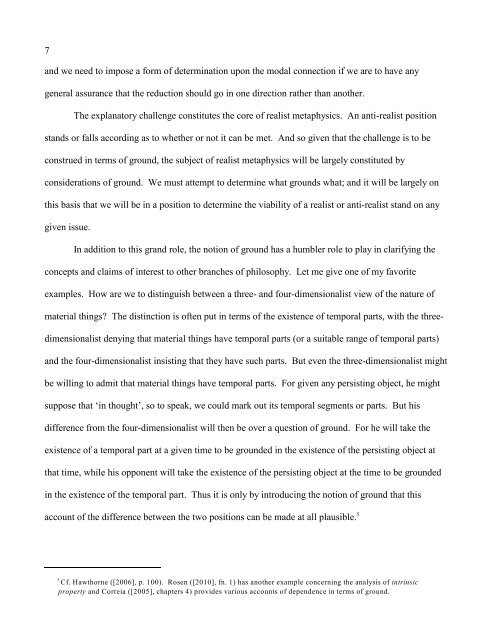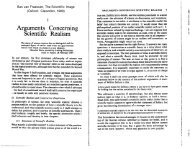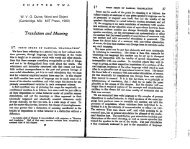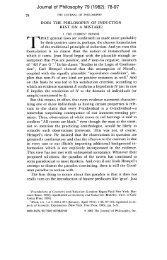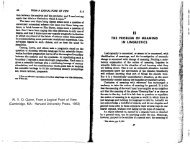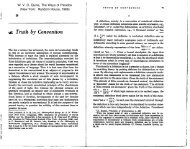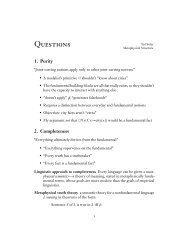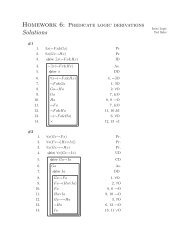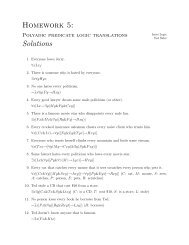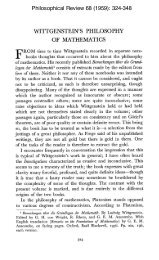Fine - guide to ground.pdf - Ted Sider
Fine - guide to ground.pdf - Ted Sider
Fine - guide to ground.pdf - Ted Sider
Create successful ePaper yourself
Turn your PDF publications into a flip-book with our unique Google optimized e-Paper software.
7<br />
and we need <strong>to</strong> impose a form of determination upon the modal connection if we are <strong>to</strong> have any<br />
general assurance that the reduction should go in one direction rather than another.<br />
The explana<strong>to</strong>ry challenge constitutes the core of realist metaphysics. An anti-realist position<br />
stands or falls according as <strong>to</strong> whether or not it can be met. And so given that the challenge is <strong>to</strong> be<br />
construed in terms of <strong>ground</strong>, the subject of realist metaphysics will be largely constituted by<br />
considerations of <strong>ground</strong>. We must attempt <strong>to</strong> determine what <strong>ground</strong>s what; and it will be largely on<br />
this basis that we will be in a position <strong>to</strong> determine the viability of a realist or anti-realist stand on any<br />
given issue.<br />
In addition <strong>to</strong> this grand role, the notion of <strong>ground</strong> has a humbler role <strong>to</strong> play in clarifying the<br />
concepts and claims of interest <strong>to</strong> other branches of philosophy. Let me give one of my favorite<br />
examples. How are we <strong>to</strong> distinguish between a three- and four-dimensionalist view of the nature of<br />
material things? The distinction is often put in terms of the existence of temporal parts, with the three-<br />
dimensionalist denying that material things have temporal parts (or a suitable range of temporal parts)<br />
and the four-dimensionalist insisting that they have such parts. But even the three-dimensionalist might<br />
be willing <strong>to</strong> admit that material things have temporal parts. For given any persisting object, he might<br />
suppose that ‘in thought’, so <strong>to</strong> speak, we could mark out its temporal segments or parts. But his<br />
difference from the four-dimensionalist will then be over a question of <strong>ground</strong>. For he will take the<br />
existence of a temporal part at a given time <strong>to</strong> be <strong>ground</strong>ed in the existence of the persisting object at<br />
that time, while his opponent will take the existence of the persisting object at the time <strong>to</strong> be <strong>ground</strong>ed<br />
in the existence of the temporal part. Thus it is only by introducing the notion of <strong>ground</strong> that this<br />
5<br />
account of the difference between the two positions can be made at all plausible.<br />
Cf. Hawthorne ([2006], p. 100). Rosen ([2010], fn. 1) has another example concerning the analysis of intrinsic<br />
5<br />
property and Correia ([2005], chapters 4) provides various accounts of dependence in terms of <strong>ground</strong>.


